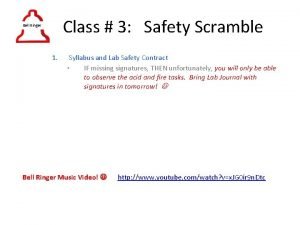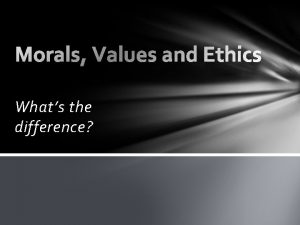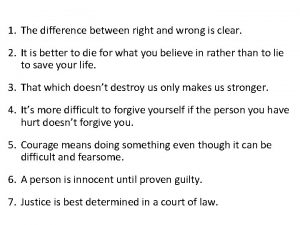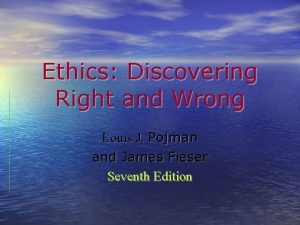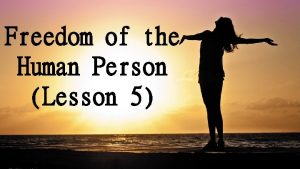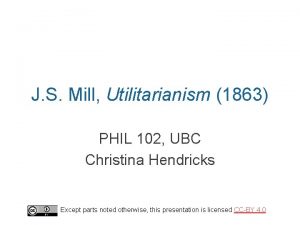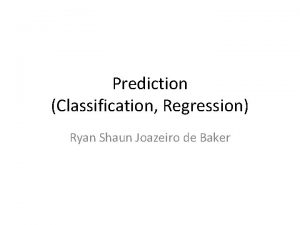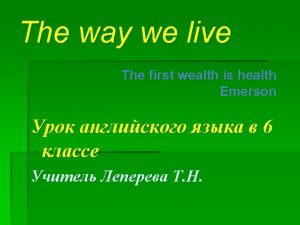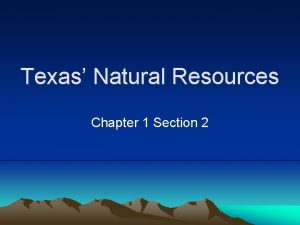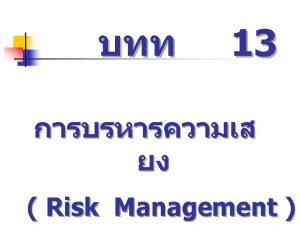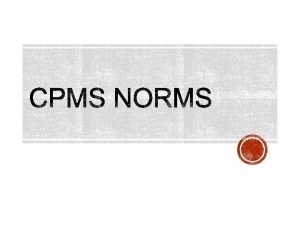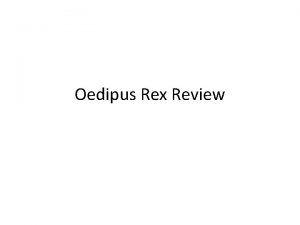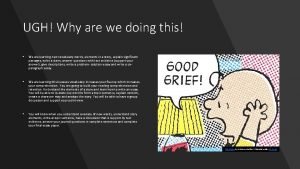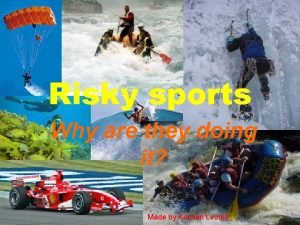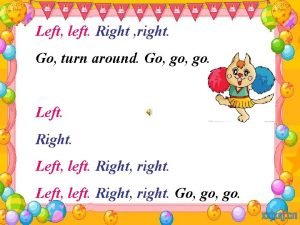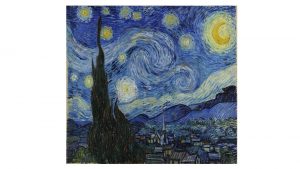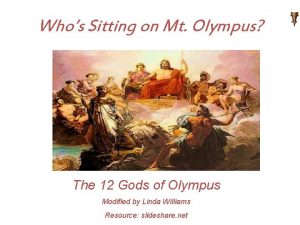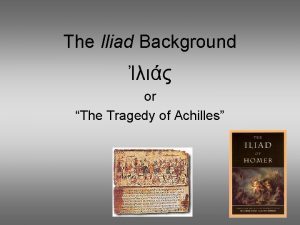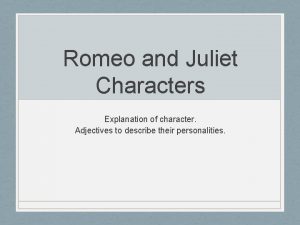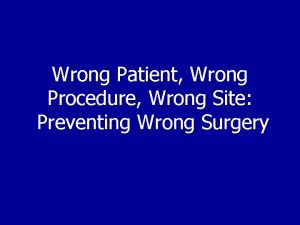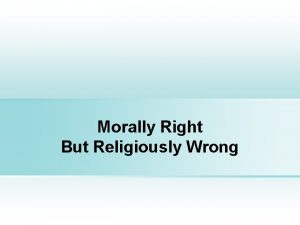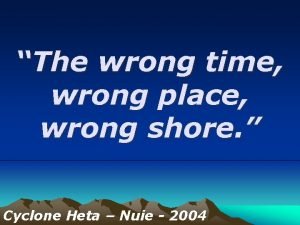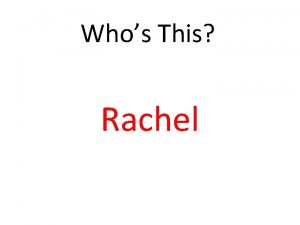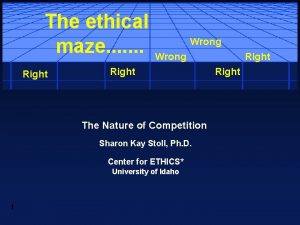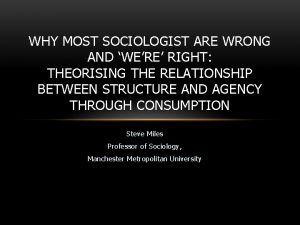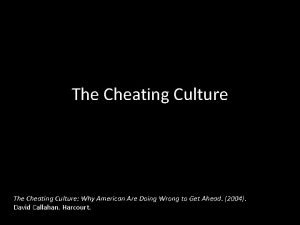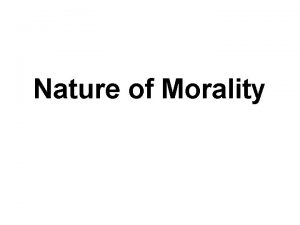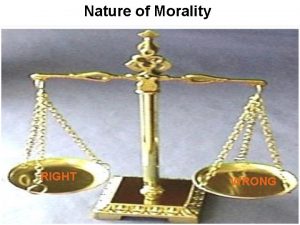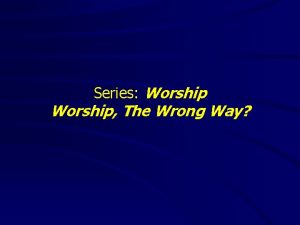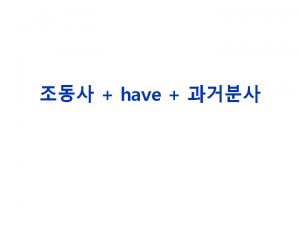Whos doing right and whos doing wrong Why
































- Slides: 32


Who’s doing right and who’s doing wrong? Why?

He can obey traffic rules. She shouldn’t pick flowers in the park. They can keep quiet in the library.

He shouldn’t drop litter everywhere. They can queue for their turn. He shouldn’t leave the tap running.

Summary We should obey traffic rules. keep quiet in the library. queue for our turn. Doing the right things We should not pick flowers in the park. drop litter everywhere. leave the tap running.

Public signs vt. /vi. 警告,告� vi. /vt. 乱��物 It warns people not to litter carelessly. It’s bad manners to litter carelessly.

Public signs

Listening Amy is talking with her cousin Shirley about signs used in public places. Listen to the first part of their conversation and help Shirley complete her notes in Part A 1.

Public signs: Public signs used in public places. l Are used in are public places bright They are often bright in colours and have l Often (1)____ in colours pictures on them l Often have (2)_____ l Helphelp explain things and give useful They explain andusgive us useful information. way Ø example, Help us find ourhelp (3)____ For they us find our way, tell us places Ø Tell about the (4)_______ us safe about theusplaces around us andaround keep us safe signs Ø Keep us (5)______ fromalso danger from danger. Some warn us not to do something Warn us (6)______ doØsomething.

Presetation These signs warn us not to do something.

There’s a cigarette with a red line across it. It means “No smoking”. We mustn't / shouldn't smoke here. It warns people not to smoke here.

There’s a camera with a red line across it. It means “No photos”. We mustn't / shouldn't take photos here. It warns people not to take photos here.

There’s a letter “P” with a red line across it. It means “No parking”. We mustn't / shouldn't park our cars here. It warns people not to park their cars here.

There's a person who drops litter on the ground with a red line across it. It means “No littering”. We mustn't / shouldn't drop litter here. It warns people not to drop litter here.

Listening Listen to the second part of the conversation. Help Shirley write the missing information in the table below on P 72.

Sign Meaning No smoking Usually seen places like hospitals in(1)_________ places like museums No photos in(2)_________ No parking the street in(3)_________ No littering public places like parks in(4)_________

Completing the report Shirley is writing a report on public sign. Help her complete her report on Page 73. Fill in the blanks with the information in Parts A 1 and A 2.

Public signs We can see different public signs in places like hospitals (2) _____ museums , streets and (3) (1) _____, parks They are often bright in colours and _______. pictures on them. have (4) ____ explain things. Most of Public signs help (5)____ useful information. They help them give us (6)_______ find our way tell us about the (8) us (7) ______, places around us keep us (9)________ safe from danger ________, not to do something and warn us (10)__________.

Here are some examples: No littering (11)_________ No photos (12)_________ No smoking (13)_________ No parking (14)_________

Speak up Can you guess who the famous painter was according to his paintings? Picasso (1881 -1973)

Listen and answer 1. Where did the conversation happen? In an art museum. 2. What does Amy want to do? Can she do it? She wants to take a photo of a famous painting. No, she can’t. 3. What else does Amy tell Shirley? They shouldn't shout in the museum.

Read and fill In the museum We shouldn't talk softly. shout. take photos. We should follow the public signs and obey the rules.

Further thinking In other public places We should 1). . . 2). . . 3). . . … We shouldn’t 1). . . 2). . . 3). . . … We should follow the public signs and obey the rules. waterside library cinema restaurant

Make a conversation Sample conversation A: It’s hot. Can we swim here? B: I’m afraid not. A: Why not? B: Look at that sign. It says “No swimming”. We shouldn’t swim here. . (deep, dangerous, catch a cold, shark. . . ). A: OK. Let’s go.

1. Help explain things and give us useful information. explain vt. & vi. 解释 a. explain sth. to sb. 向某人解释某事 注意不用explain sb. sth. e. g. 律师向我们解释了新规则。 The lawyer explained the new rules to us. b. explain (to sb. ) + that/ how/ why/ what. . . 从句 e. g. 我来解释一下我的意思。 Let me explain what I mean.

2. Keep us safe from danger keep sb. from sth. 保护,使免受 e. g. 世界上的妈妈会想尽一切办法使自己的孩子免受伤害。 Mothers in the world will do anything to keep their children from harm. Some other phrases: a. keep oneself from sth. 保护自己免受. . . b. keep sb. from doing sth. 阻止某人做某事 = stop/ prevent sb. (from) doing sth. c. keep sb. doing 使某人一直做某事

3. warn us not to do something warn vt. & vi. 警告,告诫 a. warn sb. (not) to do sth. 警告某人(不)做某事 e. g. 这个标志警告我们不要在这条河里游泳。 This sign warns us not to swim in this river. b. warn sb. about/ of/ against sth. 警告某人注意某事 e. g. 我已经警告过你注意小偷。 I have warned you of the thief.

4. No parking / No littering a. No + doing/ n. 不允许,禁止 e. g. 熄灯后禁止说话! No talking after lights out. 人行道/路面上不许停车。No parking on the pavement. b. parking n. 停车 停车位 a parking space/ place park vt. & vi. 停车 e. g. 不要把车停这儿。 Don't park your car here. c. litter vi. & vt. 乱丢杂物 e. g. 勿乱丢杂物。Don’t litter. / No littering. litter un. 垃圾,杂物 随意丢垃圾 drop litter carelessly

1. 你可以把事情向他解释一下。 explain it to him You can ____________. 2. 公共标志可以让我们远离危险。 ___________________ Public signs can keep us away from danger. 3. 我们必须警告人们勿在此钓鱼。 warn people not to fish here. We must ____________ 4. 我们不应该随地乱扔纸屑。 not litter the ground with paper. We should ________

The famous author Goethe said: “The manner of a human being is the mirror which reflects the people's portrait. ” 著名文学家歌德曾经说过:“一个人的礼貌就是照出 Obey the public rules 他肖像的镜子。” & Manner is the gold key to make people live together Live a happy life well , and they will be safe, ordered, happy and harmonious due to the key. 礼仪是人们和谐相处的金钥匙, 只有拥有它, 才会安全、 有序、幸福、和谐。

Homework 1. Remember the new words and phrases. 2. Finish some exercises in the workbook. 3. Recite the passage about public signs. 4. Preview the next lesson.

 Right product right place right time right price
Right product right place right time right price Family time
Family time I feel something so right doing the wrong thing
I feel something so right doing the wrong thing Iambic pentameter
Iambic pentameter Pictures
Pictures The right man on the right place at the right time
The right man on the right place at the right time Lab safety bell ringer
Lab safety bell ringer Motivation based on ideas of right and wrong
Motivation based on ideas of right and wrong The difference between right and wrong is clear
The difference between right and wrong is clear Example of ethics
Example of ethics Ethics discovering right and wrong
Ethics discovering right and wrong Our inner awareness of an aptitude to do right or wrong
Our inner awareness of an aptitude to do right or wrong Two wrong don't make a right
Two wrong don't make a right Rule utilitarianism
Rule utilitarianism There is no wrong way to do the right thing
There is no wrong way to do the right thing Wrong or right
Wrong or right Anything worth doing is not necessarily worth doing well
Anything worth doing is not necessarily worth doing well By doing nothing we learn to be ill
By doing nothing we learn to be ill Why are some rivers in texas called “wrong way” rivers?
Why are some rivers in texas called “wrong way” rivers? Why risk can go wrong
Why risk can go wrong Don't ask why why why
Don't ask why why why Integrity is doing the right thing when nobody's watching
Integrity is doing the right thing when nobody's watching Who does creon tell oedipus to send for?
Who does creon tell oedipus to send for? Why are we doing this
Why are we doing this Why are they doing this
Why are they doing this Left right turn around go go go
Left right turn around go go go You put your left foot in
You put your left foot in Left left right right go go go
Left left right right go go go Who was the thane of glamis
Who was the thane of glamis Whos a famous painter
Whos a famous painter Who's who on mount olympus
Who's who on mount olympus Whos achilles
Whos achilles Adjectives to describe romeo and juliet characters
Adjectives to describe romeo and juliet characters






